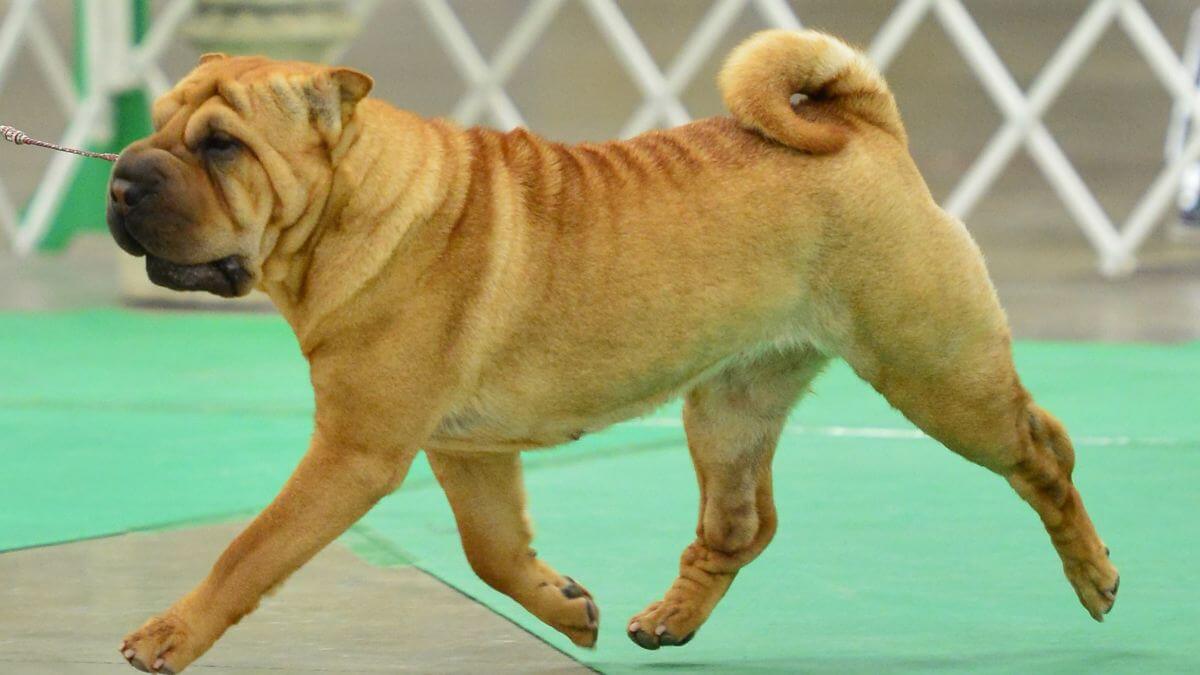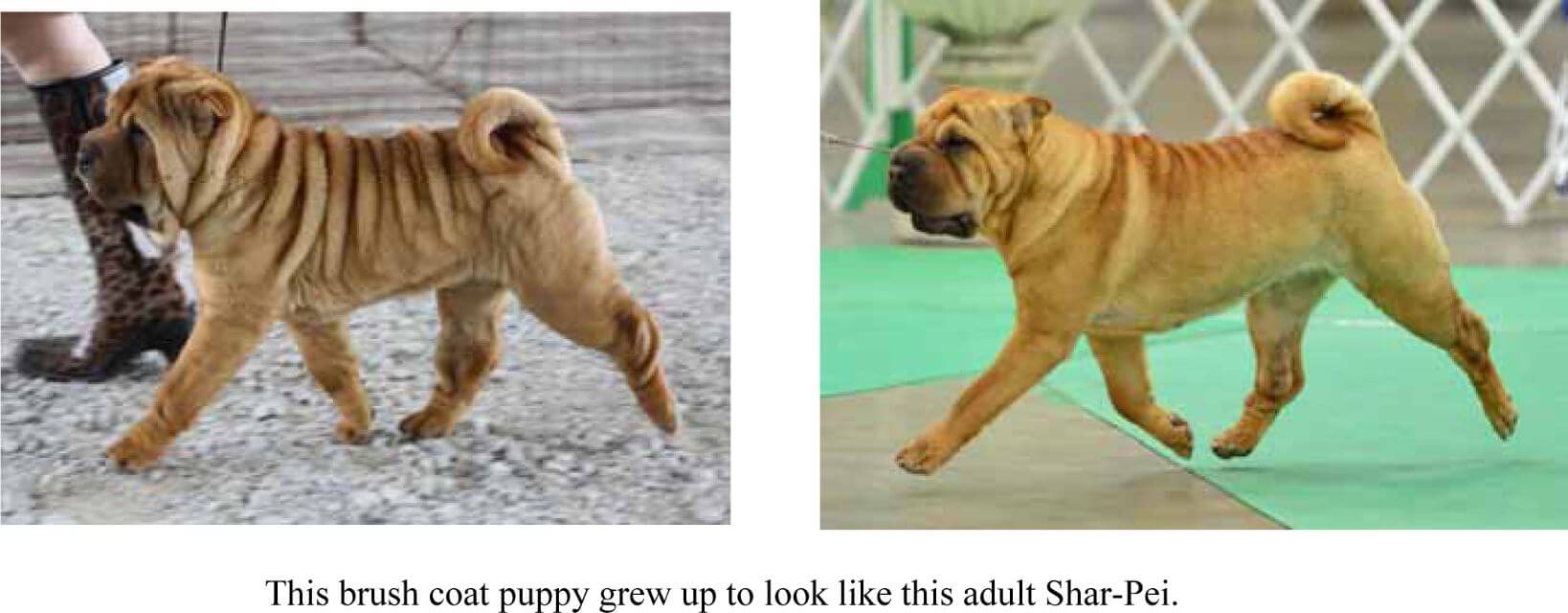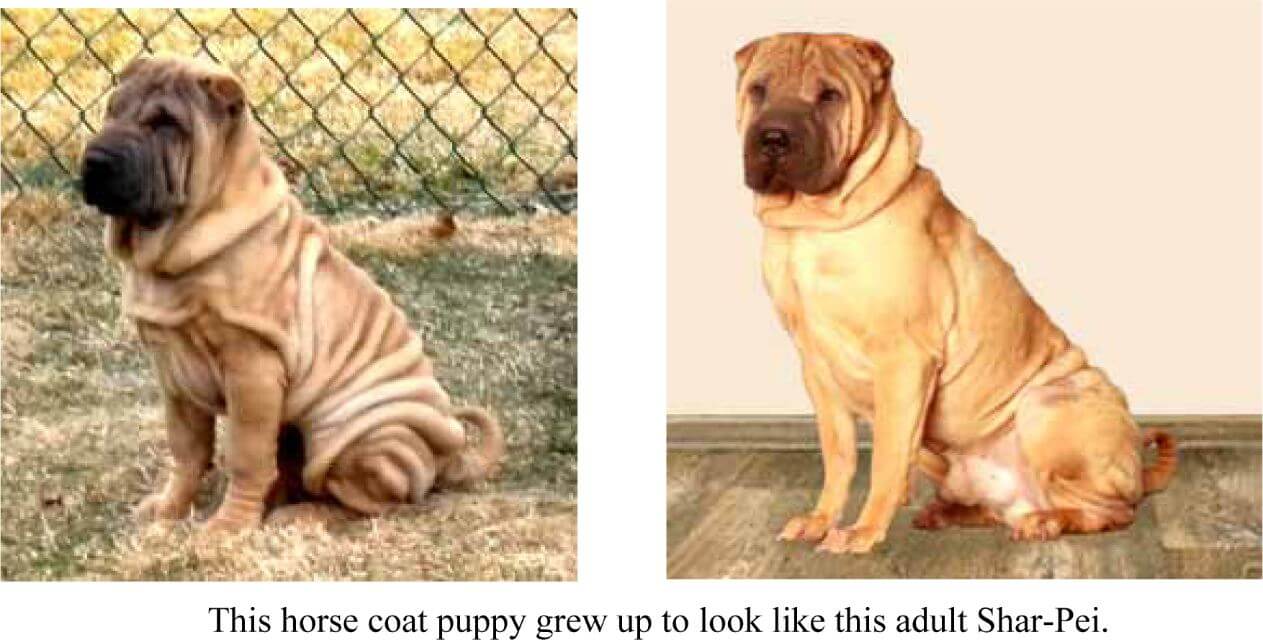


Home » Judging the Chinese Shar-Pei

This article was originally published in Showsight Magazine, January 2014 issue.
Anyone familiar with Chinese Shar-Pei has undoubtedly noticed great improvements in a number of areas since the breed first appeared in the US approximately forty years ago. First accepted into the Miscellaneous Class in 1988, Chinese Shar-Pei took their spot in the Non-Sporting Group in 1992. In addition to significant improvements in temperament and overall health, conscientious breeders have worked to standardize the breed’s size, style, pigmentation and structure. In the past, exhibitors often heard judges lament that the entries “looked so different from one another.” To be sure, there can still be quite a bit of variation in the appearance of dogs within a class, but today the differences are more likely to be within the ranges found in other breeds – differences in substance, structure and movement.
A previous article focused on breed-specific judging in regards to the entire standard. This article will focus on evaluating distinctive breed characteristics and will include tips to help judges be more successful interacting with Chinese Shar-Pei. When a judge looks at our dogs in profile, several of the unique breed characteristics are on full display. The standard starts by describing the general appearance of a Shar-Pei as being “an alert, compact dog of medium size and substance; square in profile, close-coupled; the well-proportioned head slightly but not overly large for the body. The short, harsh coat, the loose skin covering the head and body, the small ears, the “hippopotamus” muzzle shape and the high set tail impart to the Shar-Pei a unique look peculiar to him alone.

The loose skin and wrinkles covering the head, neck and body are superabundant in puppies but these features may be limited to the head, neck and withers in the adult. In this section, one of the distinctive characteristics mentioned is the well-proportioned head, slightly but not overly large for the body. Judges sometimes get confused by the reference to the “hippopotamus” muzzle shape and perhaps take this reference literally in looking for a head that is not well-proportioned and appears too large for the body. The Chinese Shar-Pei should have a broad and full muzzle with no suggestion of snippiness. The length from nose to stop is approximately the same as from stop to occiput. The stop is moderate and the skull is flat and broad. It is important that the head is proudly carried and covered with wrinkles on the forehead that continue into the side, framing the face.
The wrinkling on the headpiece along with small, tightly set triangular-shaped ears, abundant dewlap and dark, deeply set, almond-shaped eyes contribute to the classic scowling expression. (Dilute colored dogs may have a lighter eye.) Regarding overall wrinkling, it is important to note that the while loose skin and wrinkles may be superabundant in puppies; they are often limited to the head, neck and withers in the adult. A judge could certainly penalize an entry with a lack of visible wrinkling in those areas, but an adult should not be penalized for having more wrinkling than others in the entry, as long as the skin and coat appear healthy and the dog has a balanced look.
Another defining breed characteristic mentioned in the general appearance paragraph is the short, harsh coat. In addition to checking the coat length (a coat in excess of 1″ at withers, or a coat that has been trimmed is a major fault,) a judge must evaluate the coat’s texture. Breeders are pleased when producing dogs with extremely harsh coats. The name Shar-Pei loosely translates to sand-skin and refers to the sand-paper-like coat. It is recommended that the judge run his or her hand from the rear forward to the withers after completing the individual examination. Soft coats and wavy coats are also major faults.

The Shar-Pei is to be shown in a natural state and the coat should appear healthy without being shiny or lustrous. At some shows, classes may be divided into the two acceptable coat types – horsecoat and brushcoat. It is not a judge’s task to determine the type of coat and one coat is not preferred over the other. What is important is to determine which dogs have coats with the correct harsh texture. The general appearance paragraph also mentions the importance of a high set tail, a characteristic feature of the breed. The tail is thick and round at the base and tapers to a fine point, curling over or to either side of the back. The high set tail goes hand in hand with the up-tilted anus and the slightly rising topline. The topline dips slightly behind the withers and rises slightly to the short, broad loin. This should not appear to be a sway back or saddle back and there is no dropping of the topline at the base of the tail. This reference causes some confusion. The correct topline should never appear to be high in the rear and it is important that the dog appear compact with a strong, firm back. The topline should be evaluated while the dog is standing and again when moving.
Judges should remember that one of the original functions of the breed was as a watchdog and Shar-Pei may be essentially independent and standoffish with strangers. Due to the deep set eye and wrinkles framing the face, Shar-Pei may have limited peripheral vision. Some dogs may be startled if hands come at them from above.
